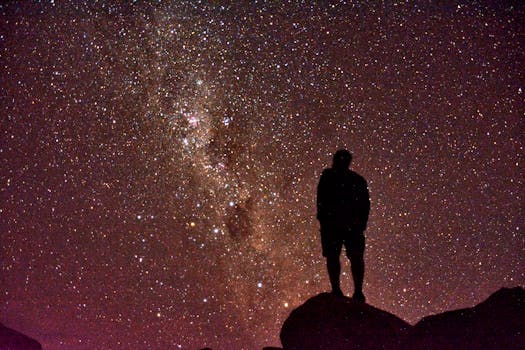
“
Beyond the Milky Way: Imagining New Worlds and Possibilities
Imagining new worlds and possibilities Beyond the Milky Way:
As we continue to explore and understand our own galaxy, we are also drawn to the mysteries of the universe beyond. The possibility of other galaxies, each with their own unique characteristics and potential for life, is a tantalizing one that has captured human imagination for centuries. For more on the power of imagination in exploring these themes, check out Soaring Through the Cosmos: The Power of Imagination Beyond the Stars.
Introduction to the Universe Beyond the Milky Way
The universe is vast and complex, with billions of galaxies, each containing billions of stars. The Milky Way, our home galaxy, is just one of many, and its exploration has only scratched the surface of what is out there. As we look beyond the Milky Way, we are met with a vast expanse of unknowns, from the properties of dark matter and dark energy to the potential for life on other planets. For insights on the imaginative aspects of this exploration, see The Infinite Universe of Imagination: Beyond Celestial Boundaries.
The universe is thought to have begun around 13.8 billion years ago, with the Big Bang marking the beginning of space and time as we know it. Since then, the universe has been expanding, with galaxies moving away from each other at incredible speeds. This expansion has led to the formation of complex structures, from galaxy clusters to superclusters, and has given rise to the diverse range of galaxies we see today.
Exploring the Possibilities of New Worlds
As we explore the universe beyond the Milky Way, we are met with a multitude of possibilities. From the potential for life on other planets to the discovery of new forms of energy, the universe is full of mysteries waiting to be uncovered. One of the most exciting areas of research is in the field of exoplanets, where scientists are working to discover and characterize planets that orbit stars other than the Sun.
So far, thousands of exoplanets have been discovered, ranging in size from small, rocky worlds to massive gas giants. Some of these planets are thought to be located in the habitable zones of their stars, where conditions are suitable for life as we know it. The discovery of exoplanets has opened up new avenues for the search for life beyond Earth, and has raised questions about the potential for human exploration and colonization of other planets.
Imagining the Future of Space Exploration
As we continue to explore the universe beyond the Milky Way, we are also forced to imagine the future of space exploration. With the development of new technologies, such as advanced propulsion systems and habitats, the possibility of human exploration and settlement of other planets becomes more realistic. However, this also raises important questions about the implications of such exploration, from the potential risks to the environment and indigenous life forms to the ethical considerations of establishing human settlements on other planets.
One of the most significant challenges facing space exploration is the development of sustainable technologies that can support human life over long periods. This includes the creation of reliable food sources, air and water supply systems, and radiation protection. Additionally, the psychological and sociological impacts of long-term space travel on the human mind and body must be considered, as well as the need for establishing effective communication systems with Earth.
Conclusion and Takeaways
In conclusion, the universe beyond the Milky Way is full of mysteries and possibilities waiting to be uncovered. From the potential for life on other planets to the discovery of new forms of energy, the universe is a complex and fascinating place that continues to capture human imagination. As we continue to explore and understand the universe, we are also forced to imagine the future of space exploration and the implications of such exploration.
Some key takeaways from this article include:
- The universe is vast and complex, with billions of galaxies, each containing billions of stars.
- The possibility of other galaxies, each with their own unique characteristics and potential for life, is a tantalizing one that has captured human imagination for centuries.
- The discovery of exoplanets has opened up new avenues for the search for life beyond Earth, and has raised questions about the potential for human exploration and colonization of other planets.
- The development of sustainable technologies is crucial for supporting human life over long periods in space, and raises important questions about the implications of such exploration.



